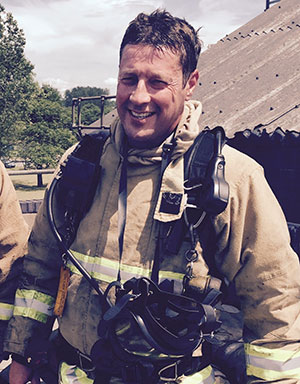The 1st October, 2019, marks the 13th anniversary of the Regulatory Reform (Fire Safety) Order 2005 (the Order) coming into force. 6 years ago I published an article, “A Survey of 100 Prosecutions” and I was amazed at the response it received. A lot has happened in the fire safety world since then. As I recently passed 200 cases brought under the Order, I thought that the passing of that milestone would be a good opportunity to examine my cases in more detail and to cross-reference them with the government statistics on prosecutions.
Unfortunately, I have found that there are a number of issues with the government statistics. The first problem is that data involving prosecutions was not collected until 2009, some 3 years after the Order came into force. Secondly, the way in which the data is presented changed when responsibility for the statistics passed from the Department for Communities and Local Government (DCLG) to the Home Office in or around 2016. Thirdly, the criteria for the collection and assimilation of the data is not clear. For example, the data for 2011/12 has a heading “Prosecutions during 2011-12” and is then split into 6 categories, depending upon each stage of a prosecution during that time period. It is not clear how many prosecutions were completed during 2011-12.
Finally, the government statistics do not provide any information in relation to the sentences passed by the courts in relation to the prosecutions brought.
In the circumstances, I, together with my colleague James Aird, have conducted a study of the statistics in an attempt to assimilate the data in a meaningful way, in order to see whether any trends or patterns can be deduced from the figures, and also to discover the way in which the Order has been enforced, and which fire services have been primarily responsible for its enforcement.
To assist, we have made ‘freedom of information’ requests to all fire services in relation to the prosecutions brought between 2006 and 2009 in an attempt to get a more complete view of the full application of the Fire Safety Order, since it came into force. All but 3 services responded.
For me, the most surprising aspect of the government figures was that there had been approximately 560 prosecutions* between October 2006 and March 2018. If this is correct, then I have been involved in over a third of all prosecutions brought under the Order. As I have kept a record of all of the cases I have been involved with since 1 October, 2006, I can be pretty certain of my own statistics, so I thought it would be an interesting exercise to see if the information that I had gathered was reflected by the national figures.
We decided to break the study into 4 main areas:
- Breaches Prosecuted – The way in which the Order has been enforced.
- Premises Prosecuted – The types of premises which have been the subject of prosecutions
- Prosecuting Fire Services – The fire services responsible for prosecutions
- Sentencing
My Experience of the FSO
My involvement with the Order began in February 2007, when I was instructed in relation to an enforcement notice appeal in respect of a hotel. The notice had been issued on 25 October, 2006. The appeal was dismissed. A week later, I was asked to issue 2 separate summonses in relation to prosecutions under the Order.
I was only involved with a handful of cases under the Fire Precautions Act (the relevant pre-Fire Safety Order legislation), so I am not in a position to make comparisons to prosecutions under the previous legislation. Nevertheless, the survey provides some useful information and certainly provides a reasonable overview of the types of prosecutions brought, and how the courts have dealt with them.
For me, the most interesting fact is that I have only conducted 9 trials out of 200 cases, which is less than 5% of Defendants. This means that only 9 defendants have pleaded Not Guilty to all charges brought.
All 9 defendants were found guilty after trial.
I would point out that 14 cases were withdrawn by the prosecuting authority prior to trial, but in 12 of those cases, guilty pleas had already been entered by another defendant in respect of the same premises. One case was withdrawn due to the fact that the defendant company had changed name and been wound up and another withdrawn case involved alleged offences on the weekend of 30 September, 2006, the day before the Order came into force (we couldn’t prove that relevant persons were affected on 1 October, 2006).
In 3 cases, the defendants disappeared and there are warrants without bail awaiting those defendants.
Accordingly, 87 per cent of defendants pleaded Guilty to the charges brought against them. I strongly believe that the guilty pleas resulted from well-prepared prosecution files backed with substantial evidence against the defendants. What must be remembered here is that fire officers are neither lawyers nor police. Whilst many fire safety officers receive some legal training, prior to 2006 there was very little training provided in areas such as investigation and interviewing techniques; evidence and legal procedure. Thus, the fire services and their fire safety officers should take full credit for satisfying the court and defence solicitors that the defendants were guilty beyond reasonable doubt through detailed and thorough case preparation.
The Study
As I have indicated, the government began publishing figures in relation to the enforcement of the Fire Safety Order in 2009/2010, some 3+ years after the Order came into force. The data we have collated is extracted from those figures up to 2017/18 which, at the time of writing, are the latest figures available. The 2018/19 figures should be published in September or October 2019. In an attempt to obtain a global figure for prosecutions since the order came into force we asked fire services by way of a ‘freedom of information’ request to confirm whether prosecutions are taken place between 2006 and 2009. Whilst we have received responses to those requests the information gathered relate only to the number of prosecutions taken with no detail in relation to the types of charges prosecuted.
My own data is taken from cases that I have been involved in since 1 October, 2006 to date, in order to gather as much information as possible.
- Breaches Prosecuted
The government figures show that between 2009 and 2018 defendants were convicted of 1904 charges. Of those charges 443 (23%) related to article 14 emergency routes and exits. In my own cases article 14 represented 32% of all charges. This is clearly the most enforced article under the order, but this is likely to be because there are 9 separate and distinct ways of breaching article 14, whereas there are only a small number of ways in which other articles may be breached.
- Premises Prosecuted
This is an area where my own data was substantially at odds with the government statistics. The most common type of premises prosecuted across the country were shops, which represented 19.2% of all the types of premises prosecuted. Shop premises represented 1.5% of the cases I have been involved with. This may be explained by a number of reasons. I believe the primary reason to be down to the way in which premises are described and recorded. I have been involved with many cases involving living accommodation above a shop, but I would have recorded these premises as “multiple use”. This category is not used within the government statistics.
Most common type of premises in the cases I have been involved with is houses of multiple occupancy (HMOs). These premises represent 24.8% of my cases and 17.5% of the national cases.
- Prosecuting Fire Services
The government statistics clearly show which fire services were responsible for the majority of prosecutions and which fire services have had policies and procedures which have resulted in no prosecutions. The most prosecutions by one fire service is 121; whereas 3 fire services have not brought any prosecutions since the Order came into force. In my view, the figures support the contention that the nationwide location of an offence under the FSO is a significant factor in determining whether or not that offence will be prosecuted through the courts. Unless, of course, it is to be accepted that no fire safety offences have been committed in certain areas of the country, and only one or two offences in other areas between 2006 and 2018.
- Sentence
The information in relation to Sentencing comes purely from my own records. The maximum sentence under the Fire Safety Order is 2 years imprisonment and this can only be imposed at the Crown Court. The range of sentences handed out in my cases vary, with fines being the main punishment (Magistrates sentencing powers are limited to fines). However, there have been many more sentences of imprisonment in my second 100 prosecutions, than in my first 100 cases, but most prison sentences have been suspended rather than immediate custodial sentences.
I have prosecuted 3 cases (6 defendants) involving fatalities. Two of these cases resulted in suspended prison sentences. Undoubtedly, sentences were harsher in cases where relevant persons had been injured or where fire service rescues had taken place. Sentences were also more severe where there had been a fire, and where there had been breaches of enforcement or prohibition notices.
Courts have used Community Orders, such as Curfew Orders and unpaid work. The total handed out in fines, is £1,230,879 and the total costs ordered is £819,616. The average fine per case is £10,520 and average costs order £5,661. I am not aware of any Fire Safety Order fine being higher than the New Look case in 2010 which was £400,000, but there may be higher.
As part of the study we have considered the impact of the Grenfell Tower tragedy upon sentencing, but any conclusions drawn must bear in mind the impact of section 85 of the Legal Aid Sentencing and Punishment of Offenders Act 2012, which came into force in March 2015 and removed the £5000 limit on Magistrates Courts fines such that all fines are now unlimited.
What has to be remembered here is that individuals can only be fined, according to their means. Companies are usually fined in proportion to their profits and turnover. On that basis, the data supports the view that the majority of prosecutions have been brought against small to medium sized businesses or landlords. The government data does not really assist when considering the size of organisation prosecuted, but it is my experience that the larger organisations are now being prosecuted more often than in the years following the Order coming into force.
It is clear from all the information considered that the courts are treating fire safety cases for more seriously than 10 or 12 years ago. Fire services are now being inspected and audited as to how effective they are at “protecting the public through the regulation of fire safety”. The number of prosecutions a fire service has taken is taken into account within that audit process, together with the issuing of enforcement and prohibition notices.
Whether this means that there will be an increase in prosecutions to ensure that inspection and audit criteria is met remains to be seen.
Further information from the study will be released covering the four areas above in more detail, plus a review of trials-defences used, the Grenfell affect, why so many defendants plead guilty and enforcement notices.
Warren Spencer
Fire Safety Solicitor / Advocate
James Aird
Fire safety lawyer



